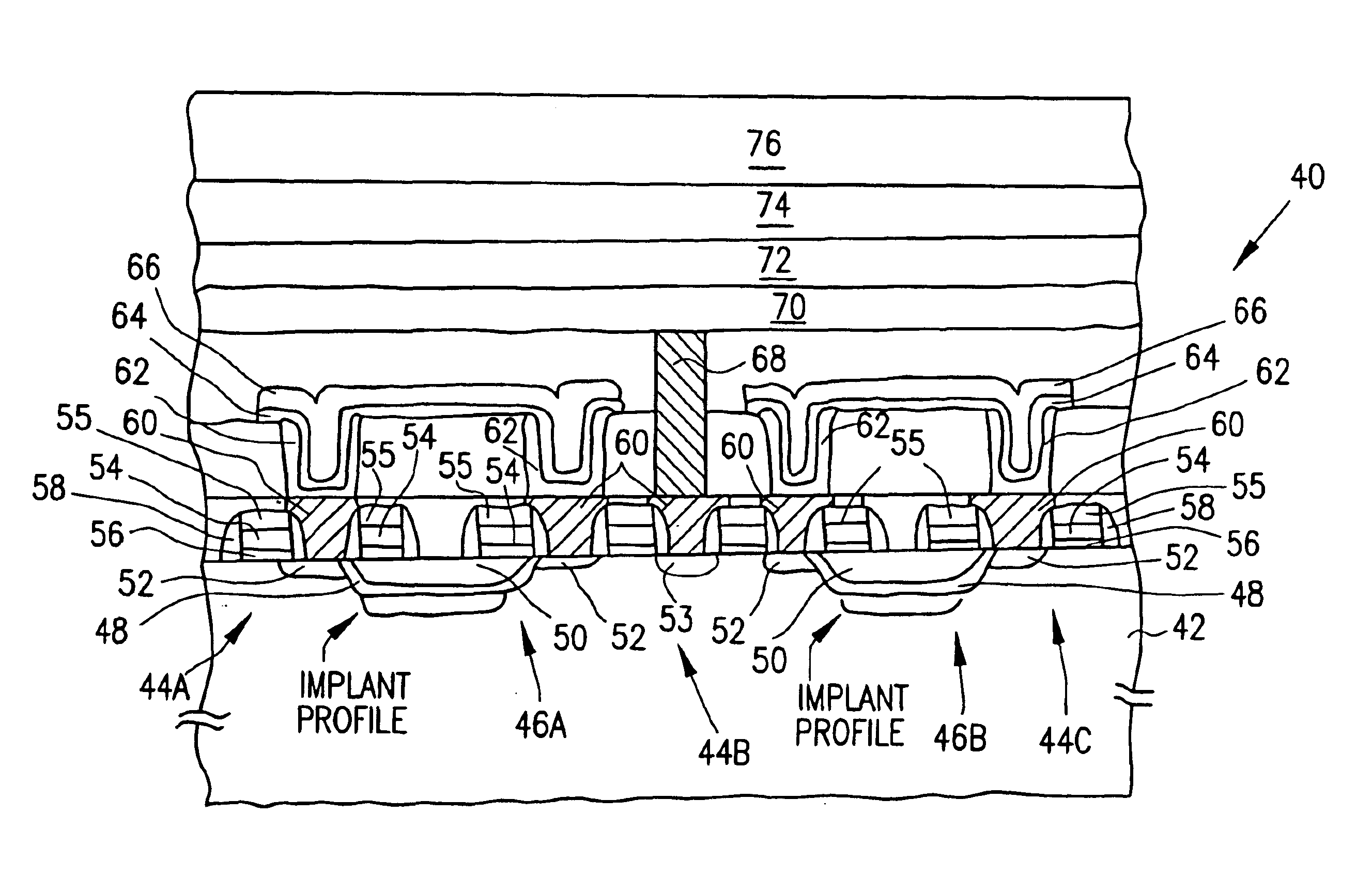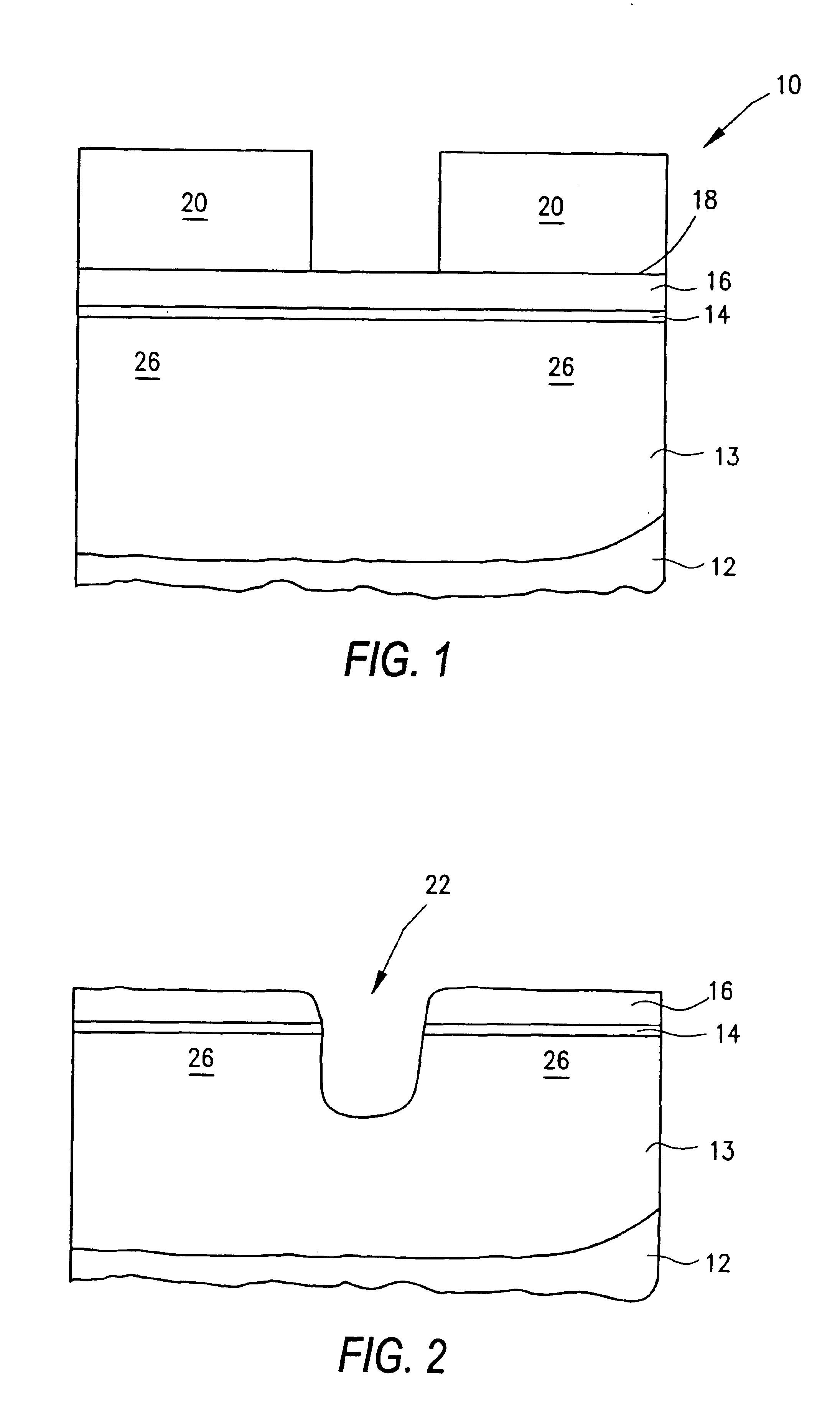Trench isolation for semiconductor devices
a technology of semiconductor devices and trenches, applied in the direction of solid-state devices, transistors, radio-controlled devices, etc., can solve the problems of high current leakage, current leakage can occur at the junction between active device regions and trenches, and the problem of parasitic inter-device current becomes more problematic, so as to improve electrical isolation and reduce optical cross-talk
- Summary
- Abstract
- Description
- Claims
- Application Information
AI Technical Summary
Benefits of technology
Problems solved by technology
Method used
Image
Examples
Embodiment Construction
Referring to FIG. 1, a silicon or other semiconductor wafer 10 includes a bulk substrate region 12. Typically, ions are implanted in the substrate 12 to form n-type wells and p-type wells which define the locations of the n-channel and p-channel devices 26. For example, the substrate 12 can be implanted with a p-type dopant such as boron (B) to form a p-well 13. For ease of illustration, the figures show active areas and STI field isolation regions in a single well type. However, in general, the invention is applicable to other semiconductor device isolation regions such as n-well and p-well regions in p-type substrates, n-type substrates and epitaxial substrates, including p on p+, p on p−, n on n+, and n on n−. In some implementations, the substrate 12 can comprise gallium arsenide (GaAs) or other semiconductor materials such as InP, CdS, CdTe and the like.
A layer of pad oxide 14 is provided atop the substrate 12, for example, either by deposition or by oxidizing conditions. A sac...
PUM
 Login to View More
Login to View More Abstract
Description
Claims
Application Information
 Login to View More
Login to View More - R&D
- Intellectual Property
- Life Sciences
- Materials
- Tech Scout
- Unparalleled Data Quality
- Higher Quality Content
- 60% Fewer Hallucinations
Browse by: Latest US Patents, China's latest patents, Technical Efficacy Thesaurus, Application Domain, Technology Topic, Popular Technical Reports.
© 2025 PatSnap. All rights reserved.Legal|Privacy policy|Modern Slavery Act Transparency Statement|Sitemap|About US| Contact US: help@patsnap.com



